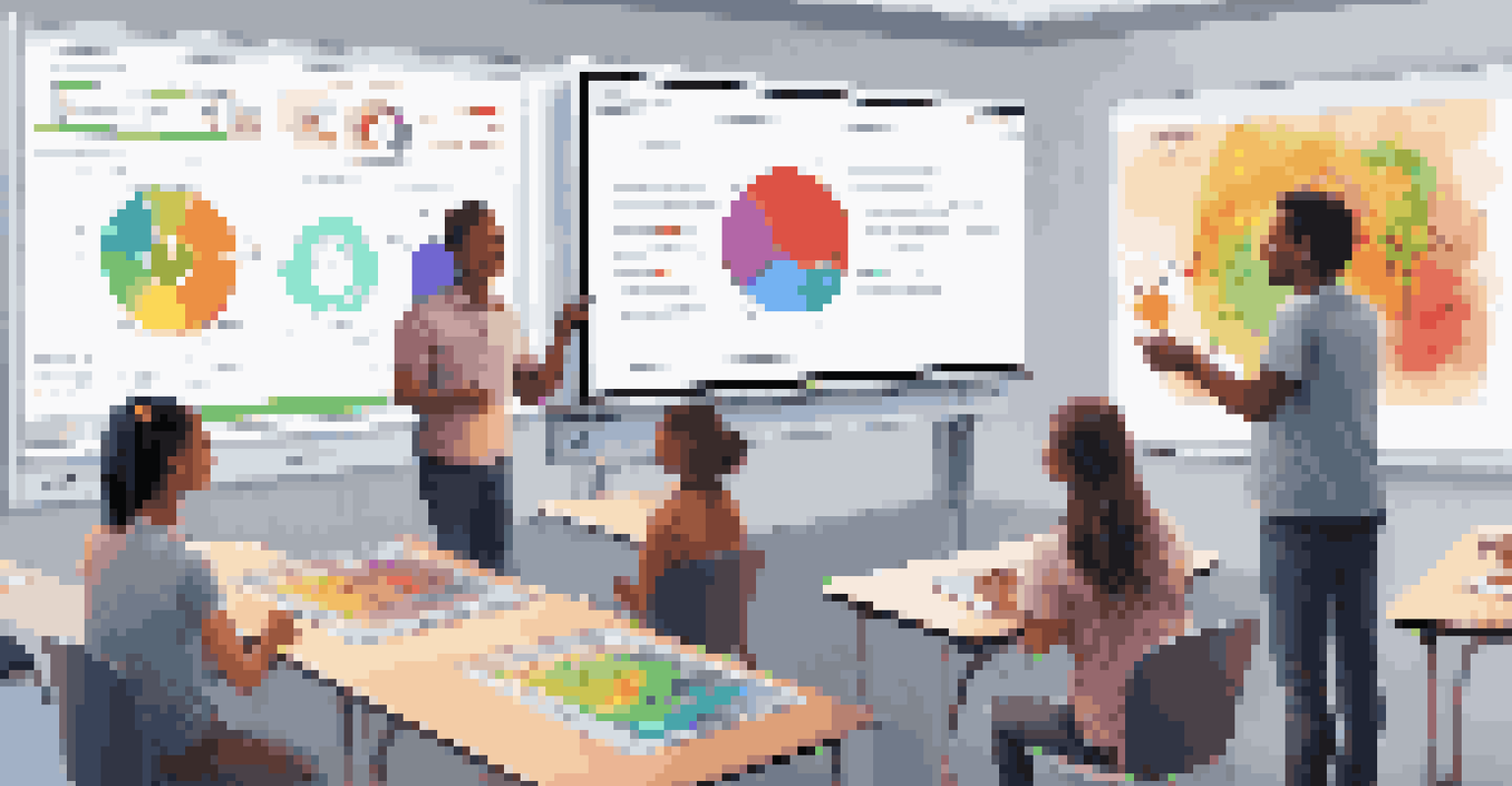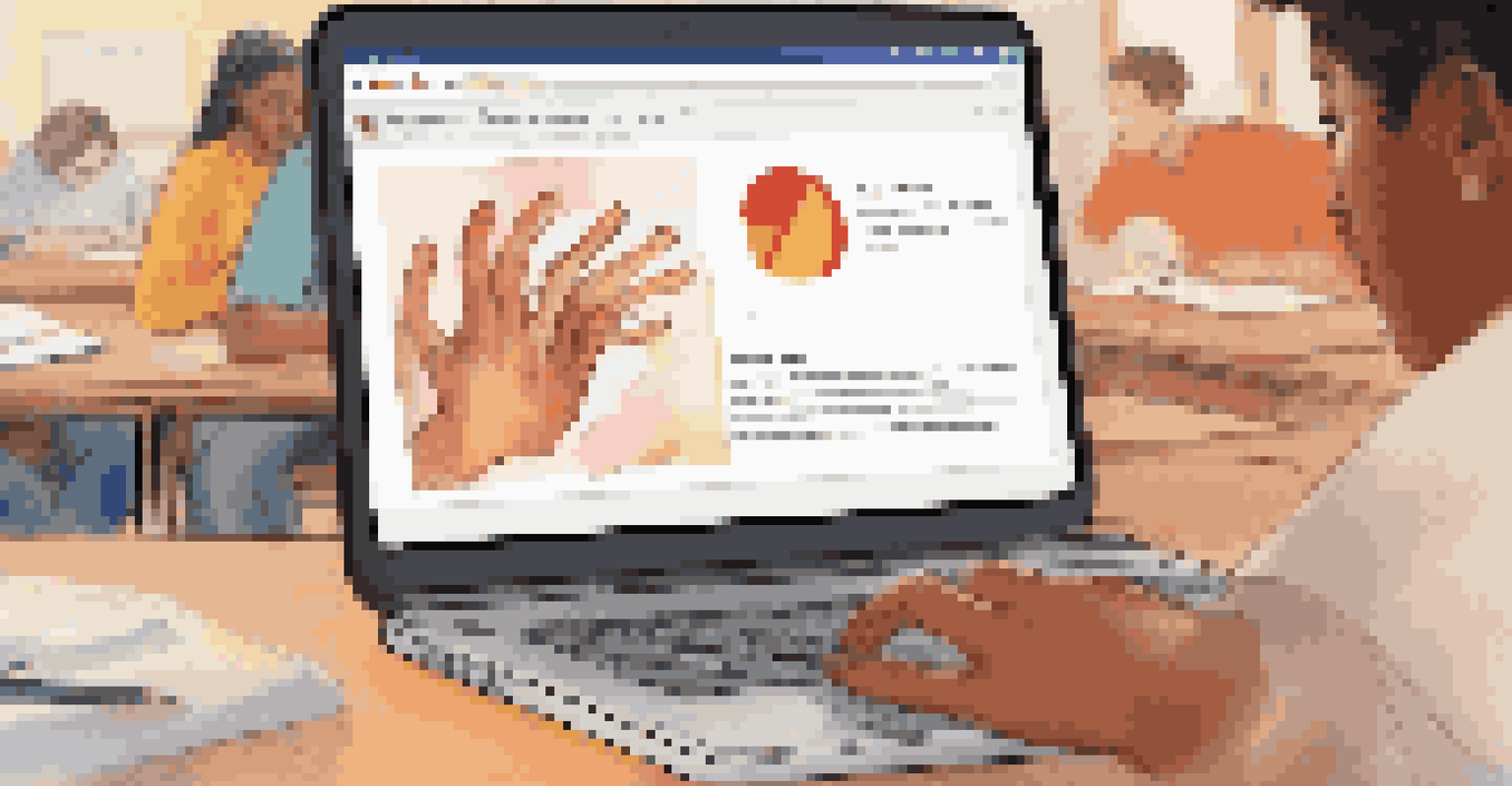The Significance of Digital Feedback Tools in Collaborative Learning

Understanding Collaborative Learning: A Quick Overview
Collaborative learning is an educational approach that involves groups of learners working together to solve problems or complete tasks. This method encourages interaction, communication, and the sharing of diverse perspectives, which can lead to deeper understanding and retention of knowledge. By engaging in group activities, students not only learn from each other but also develop critical social skills that are essential in the modern workplace.
Alone we can do so little; together we can do so much.
In today’s fast-paced digital world, collaborative learning has evolved beyond traditional face-to-face interactions. Online platforms enable learners to connect and collaborate regardless of geographic location, making education more accessible than ever. This shift has highlighted the need for effective feedback mechanisms to ensure the learning process is productive and meaningful.
Digital feedback tools play a pivotal role in this landscape. They provide instant, actionable insights that help students and educators assess progress, identify strengths, and address weaknesses, creating a more dynamic and responsive learning environment.
The Role of Digital Feedback Tools in Engagement
Engagement is crucial in collaborative learning, and digital feedback tools are designed to enhance this aspect significantly. When students receive immediate feedback on their contributions, it fosters a sense of accountability and encourages them to be more active participants in the learning process. For instance, platforms like Google Docs allow peers to comment on each other's work in real-time, which can spark lively discussions and deeper exploration of ideas.

Moreover, these tools often incorporate gamification elements, such as badges or points for participation, which can motivate learners to engage more fully. When students see their efforts recognized and rewarded, they are more likely to invest time and energy into group tasks. This gamified approach not only makes learning fun but also reinforces the importance of teamwork.
Collaborative Learning Enhances Skills
Collaborative learning fosters interaction and communication, helping students develop critical social skills essential for the modern workplace.
In essence, digital feedback tools transform passive learning into an interactive experience, promoting enthusiasm and collaboration among students. As engagement increases, so too does the overall effectiveness of the learning process.
Immediate Feedback: The Power of Timeliness
One of the standout features of digital feedback tools is the ability to provide immediate responses. This timeliness is crucial because it allows learners to address misconceptions or errors while the information is still fresh in their minds. For example, platforms like Kahoot! enable instructors to quiz students and provide instant feedback on their answers, reinforcing learning in real-time.
The greatest danger in times of turbulence is not the turbulence; it is to act with yesterday's logic.
Immediate feedback not only helps students correct their mistakes but also boosts their confidence. When learners receive positive reinforcement for their contributions, it encourages them to take risks and share their ideas without fear of judgment. This environment of trust and support is essential for effective collaborative learning.
Additionally, timely feedback allows educators to gauge the overall understanding of the group and adjust their teaching strategies accordingly. This adaptability ensures that all students are on the same page and prevents potential gaps in knowledge from widening.
Fostering a Growth Mindset Through Constructive Feedback
Digital feedback tools can also promote a growth mindset among learners. By emphasizing constructive criticism over mere evaluation, these tools encourage students to see challenges as opportunities for growth. For instance, feedback platforms like Peergrade allow students to review and provide suggestions on each other's work, fostering a culture of continuous improvement.
This approach not only helps learners develop resilience but also cultivates critical thinking skills. When students reflect on the feedback they receive, they learn to analyze their work and identify areas for growth. This reflective practice is a key component of effective learning and development.
Immediate Feedback Boosts Confidence
Timely feedback through digital tools allows learners to correct mistakes and reinforces positive contributions, creating a supportive environment for growth.
Ultimately, nurturing a growth mindset leads to a more positive learning experience. Students become more open to feedback and willing to engage in collaborative efforts, knowing that their contributions are valued and that improvement is always achievable.
Enhancing Communication Skills with Digital Tools
Effective communication is at the heart of collaborative learning, and digital feedback tools can significantly enhance these skills. By providing various channels for feedback, such as comments, audio messages, or video responses, students are encouraged to articulate their thoughts in multiple formats. This versatility helps them become more adept communicators.
Moreover, digital tools often facilitate asynchronous communication, allowing students to reflect on their responses before sharing them. This thoughtful approach can lead to more meaningful interactions, as learners take the time to articulate their ideas clearly and constructively. For example, platforms like Padlet allow students to post ideas and respond to each other at their own pace, fostering deeper discussions.
As students hone their communication skills through these interactions, they become better prepared for future collaborative efforts, both academically and professionally. The ability to express ideas clearly and listen actively is invaluable in any team setting.
Data-Driven Insights: Analyzing Collaborative Efforts
Another significant advantage of digital feedback tools is their ability to provide data-driven insights into collaborative learning efforts. Educators can track participation levels, assess the quality of contributions, and identify trends over time. This information is invaluable for understanding how groups function and where improvements can be made.
For example, tools like Edmodo allow teachers to analyze student engagement through various metrics, helping them tailor their instruction to better meet the needs of the class. By recognizing patterns in participation, educators can intervene when necessary and provide targeted support to students who may be struggling.
Data Insights Empower Learners
Digital feedback tools provide valuable data-driven insights that help educators tailor instruction and enable students to take ownership of their learning.
These insights not only benefit educators but also empower students to take ownership of their learning. By understanding their strengths and areas for improvement, learners can set personal goals and work collaboratively to achieve them, creating a more self-directed learning environment.
The Future of Collaborative Learning: Embracing Innovation
As technology continues to evolve, so too will the tools available for collaborative learning. The future promises even more innovative feedback mechanisms that leverage artificial intelligence and machine learning to provide personalized support. Imagine a digital tool that adapts its feedback based on individual learning styles and preferences, tailoring the experience to each student’s unique needs.
Additionally, advancements in virtual and augmented reality could revolutionize collaborative learning environments, allowing students to interact in immersive spaces. This could enhance the feedback process by simulating real-world scenarios where learners can practice skills and receive instant feedback in a lifelike context.

Ultimately, embracing these innovations will further enrich the collaborative learning experience. By continually integrating new technologies and feedback tools, educators can ensure that students are equipped with the skills and knowledge necessary to thrive in an increasingly interconnected world.